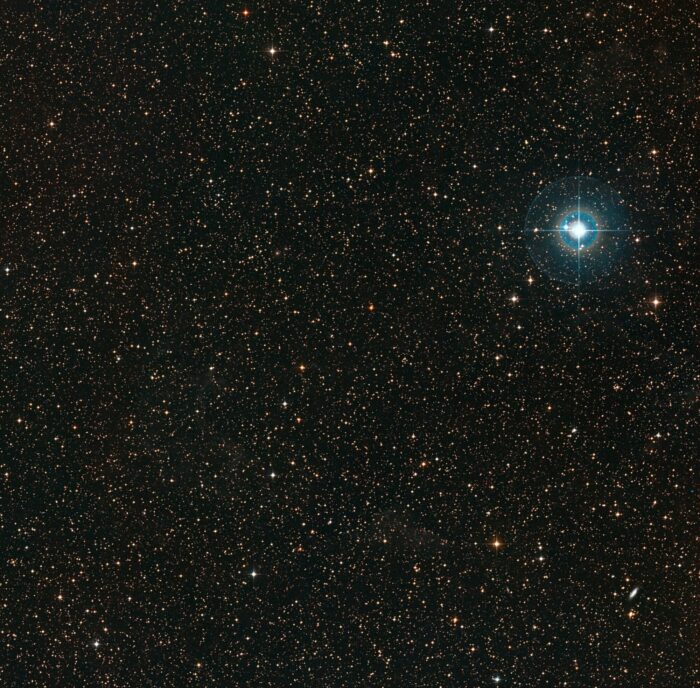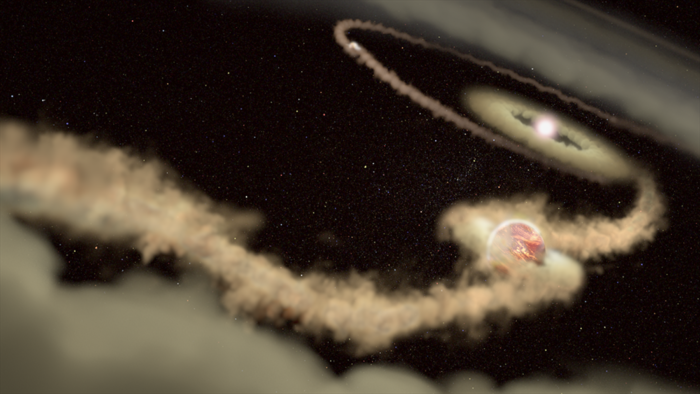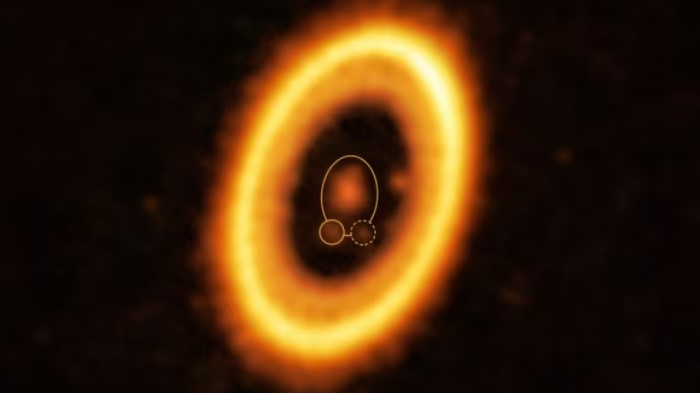Exoplanets are planets that exist outside of our own solar system.
Astronomers are constantly finding them—over 5,000 have been discovered and that numbers is growing. And with each new planet that is found, researchers are learning that there are so many different sorts of planets out there.
WASP 12 b is a Jupiter-sized world that is being torn apart by its star's gravity. TOI 3757 b is a gas giant that has the soft density of a marshmallow. Kepler 16b is a planet that orbits twin stars, meaning its sunsets would be like those on the Star Wars planet Tatooine.
And now, researchers believed they may have discovered something truly remarkable.
According to a study by a Spanish-led team working in Chile, the star PDS 70 has two planets that are on the same orbit around it.
Trojan worlds

The brightly shining star in this star field is PDS 70. It is 370 light years from Earth. (NASA)
Two objects on the same orbital path—known as Trojans—is something that does happen in our own solar system.
For example, there are Trojan asteroids. These exist in the same orbit as each other, and, in the case of Jupiter, in the same orbit of an actual planet.
But Trojan planets? That's a whole other thing.
In theory, it is possible. But because these objects are so large, the idea of two planets in one orbit is pretty mind-blowing to experts. And so far, no one has been able to find evidence of it.
That is what makes this study so exciting. Though it is not absolute confirmation of this phenomenon, it is the closest we have gotten to seeing two planets, one orbit.
Baby planets

This illustration imagines what it might look like inside the PDS 70 solar system. It is relatively young and full of young planets that are forming from gas and dust. (Credit: J. Olmsted (STScI) illustration)
The main reason researchers were looking at PDS 70 (which is about 370 light years from Earth) is that it is a relatively young star surrounded by newly forming baby planets.
The two planets that have been discovered are PDS 70 b and PDS 70 c. B is a gas giant that is heavier than Jupiter. Meanwhile, c is a bit more of a mystery. It is cloudier and appears to hold about twice the mass of the Moon. Because both of these worlds are in the midst of being formed, they are surrounded by clouds of gas and dust, coming from their star.
In other words, it looks like it could be a pair of Trojan planets. But it could be something else, too. Maybe b and c are on slightly different orbits? Maybe c isn't a planet after all? Ultimately, the researchers will need to wait until 2026 to try to get a concrete answer—that is the earliest they can get time at the same telescope in Chile (it's in high demand!).
Until then, we'll have plenty of time to contemplate the vastness and strangeness of the universe. It truly is a place where anything seems possible, even if proving such things takes a lot of time and patience!
 This image shows the star PDS 70 at the centre. The circled object is the exoplanet PDS 70 b. The dotted circle could be another planet on the same orbit. The enormous circle around everything is a cloud of gas and dust that could eventually become other new planets. (ALMA (ESO/NAOJ/NRAO)/Balsalobre-Ruza)
This image shows the star PDS 70 at the centre. The circled object is the exoplanet PDS 70 b. The dotted circle could be another planet on the same orbit. The enormous circle around everything is a cloud of gas and dust that could eventually become other new planets. (ALMA (ESO/NAOJ/NRAO)/Balsalobre-Ruza)









